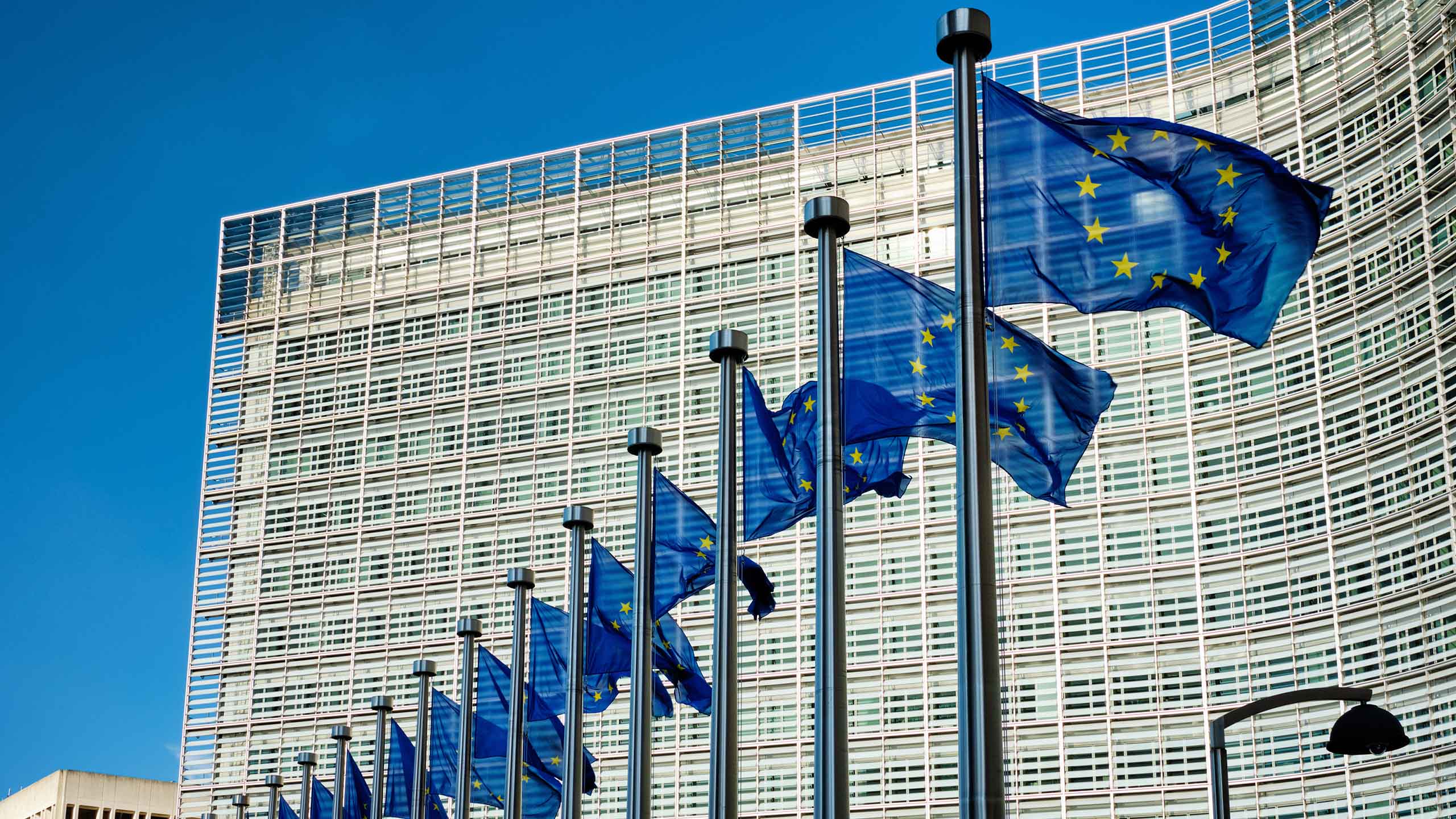Economic round-up
UK rate decision
The Bank of England kept interest rates at 4.5%, with the PMC voting eight-to-one to maintain the current level. One member of the committee, Swati Dhingra, voted to cut rates by 25 basis points. Read more from Sky News here
UK employment data
UK wage growth remained strong in the three months to January, in spite of a slowdown in hiring. Annual growth in average weekly earnings, excluding bonuses, held at 5.9% in the three months to January, in line with economists’ expectations. Read more from the FT here
US rate decision
The Federal Reserve left rates unchanged, as officials wait to see the outcome of the new administration’s policies. Central bankers are waiting for evidence that inflation is headed toward their 2% target or that the economy is weakening more than expected before committing to further rate cuts. Read more from CNN here
US retail sales
US retail sales saw a rebound in February but the moderate pace of growth stoked fears of a pullback in discretionary spending. The Commerce Department report showed a cautious consumer, with sales at restaurants and bars declining by the most in 13 months. Read more from Reuters here
US initial jobless claims
Unemployment claims increased slightly, suggesting the US labour market remained stable in March. The outlook may be more difficult from here, however, amid rising trade tensions and deep cuts in government spending. Read more from Reuters here
German ZEW index
Amid signs chancellor Friedrich Merz’s stimulus plan is having the desired effect, the ZEW Indicator of Economic Sentiment for Germany almost doubled to 51.6 in March 2025 – the highest level since February. This compares with 26 in the previous month and consensus forecasts of 48.1. Read more from Trading Economics here
Eurozone consumer confidence
Eurozone consumer confidence deteriorated more than expected in March as looming trade tariffs raised concerns over growth and inflation. Consumer confidence in the euro area fell to -14.5 points in March from -13.6 in February, missing consensus forecasts of a more moderate decline to -13. Read more from Euronews here
Markets round-up
Gilt markets
UK bond sales are forecast to rise to almost £310bn next year in a test of confidence for the Chancellor’s fiscal plans, according to an average of 10 estimates gathered by the Financial Times. The final figures will be confirmed in the Spring Statement on public finances on 26 March. Read more from the FT here
Copper price
The London price of copper climbed to a five-month high on Thursday, surpassing $10,000 (£7,713) per tonne. This strength has been fuelled by growing demand and the threat of tariffs. Read more from the FT here
S&P 500 revives
The main US index inched higher on Friday, ending four consecutive weeks of declines. The S&P 500 added 0.08%, rising into positive territory. The Nasdaq Composite gained 0.52%. Read more from CNBC here
“Emerging markets are projected to have the highest earnings growth, whereas US earnings growth is expected to be lower than that of developed markets.
Selected equity and bond markets: 14/03/25 to 21/03/25
| Market | 14/03/25 (Close) |
21/03/25 (Close) |
Gain/loss |
|---|---|---|---|
| FTSE All-Share | 4662 | 4667 | +0.10% |
| S&P500 | 5639 | 5668 | +0.50% |
| MSCI World | 3666 | 3690 | +0.70% |
| CNBC Magnificent Seven | 297.5 | 295.4 | -0.70% |
| US 10-year treasury (yield) | 4.32% | 4.26% | |
| UK 10-year gilt (yield) | 4.67% | 4.72% |
Investment round-up
ETF inflows
Assets in the global ETF sector reached a new record of $15.5tn at the end of February, according to ETFGI. ETFs saw inflows of $152.13bn during February, bringing the total for the year to $304.70bn, the highest figure on record. Read more from ERFGI here
Hermon to retire
Veteran UK smaller companies fund manager Neil Hermon is set to retire from Janus Henderson in September. He will step down from Henderson Smaller Companies after 22 years heading up the £572m investment trust. Co-manager Indriatti van Hien will continue to run the portfolio.
Cost disclosure row
The Association of Investment Companies and key industry figures have criticised the Financial Conduct Authority’s cost disclosure proposals, arguing they are unworkable and at risk of inflicting further damage to the investment companies sector. They also maintain investment trusts should be excluded from the CCI (consumer composite investments) framework.
… and the week that will be
Spring Statement
Chancellor Rachel Reeves faces a grim set of choices when she responds to the updated economic and fiscal forecasts from the Office for Budget Responsibility in her Spring Statement on 26 March. If the forecasts put her on-track to miss her fiscal rules, she will need to cut spending, raise taxes or shift the rules to create a surplus. In the meantime, there are growing demands on the public purse. Bond markets will be watching closely. Read more from the Institute for Fiscal Studies here
US ‘PCE’ reading
The US personal consumption expenditures (PCE) reading is the Federal Reserve’s favoured inflation gauge. Consensus forecasts from economists are for a 0.5% increase month-on-month and 2.7% year-on-year for February – up from the January readings of 0.3% and 2.5%, respectively. The Fed has already raised its inflation outlook for 2025. Any sign PCE figures come in above estimates could create market turbulence. Read more from CMC Markets here
The week in numbers
UK CPI (February): UK inflation is forecast to slow to 2.7% year on year from 3%, but accelerate to 0.3% month on month. Core CPI is expected to slow to 3.5% from 3.7%.
UK PMI: Consensus expectations have the UK services PMI rising to 51.5 from 51, and manufacturing rising to 47.9 from 46.9.
UK retail sales (February): Sales rose 1.7% in January. Economists will be hoping for signs the UK consumer is reviving.
US PCE price index (February): Prices are expected to have risen 0.5% month on month from 0.3%. US PMI: The US services PMI is expected to fall to 49.5 from 51, and manufacturing from 52.7 to 51.
US consumer confidence: The US consumer confidence index is expected to fall to 97.4 from 98.3, while new home sales are expected to rise 0.5% month on month.
US employment and GDP: US initial jobless claims are expected to rise to 225,000 from 223,000. The GDP forecast for the US is expected to be 2.3% year on year.
German Ifo index (March): Consensus forecasts have the business climate reading rising to 87.9 from 85.9.
Company news: Full-year results expected from Kingfisher, Next, Travis Perkins and Vistry. Read more from IG here
In focus: Re-emerging markets?
In discussions over the potential winners from the recent weakness in US mega-caps, emerging markets have barely had a mention. Yet the past few months have seen a declining US dollar, Chinese stimulus, stronger growth and building evidence of technological prowess – all of which would seem to indicate a better environment for emerging markets. Can investors capitalise?
Emerging markets should be home to stronger economic growth. The IMF forecasts growth of 4.2% for emerging and developing economies for 2025, compared with just 1.9% for developed countries. Equally, the developed country projection assumes that growth in the US will be 2.7% this year – a forecast that looks increasingly fragile. Market-watchers believe this outlook could continue.
“Emerging markets are set to play an increasingly dominant role in global growth,” FTSE Russell points out in its latest Asset Allocation Insights, for example. “The IMF expects them to outpace developed markets at an accelerating rate post-2026.” The twin emerging market behemoths of China and India are expected to grow at 4.5% and 6.5% respectively for 2025 and 2026.
Not that economic growth necessarily translates into stockmarket returns. “The relationship between economic growth and market performance can be uneven,” FTSE Russell continues. “While equity returns in developed markets have largely tracked GDP expansion over the past decade, some emerging markets have seen their stockmarkets lag what economic fundamentals might suggest.” This is particularly true for countries such as China, where geopolitical concerns have kept investors cautious in spite of economic expansion.
Earnings growth tends to have a more direct relationship with stockmarket performance – yet here, according to FTSE Russell, emerging markets also have the edge. “Emerging markets are projected to have the highest earnings growth, whereas US earnings growth is expected to be lower than that of developed markets,” the report notes.
This is a compelling long-term picture – but there are short-term headwinds. Certain emerging markets have been in the firing line for US tariffs, notably China and Mexico – though here too the impact may not be as significant as initially thought.
China in particular, appears to have learned its lesson from the first round of trade tariffs. Exports to the US as a percentage of GDP from Canada, Mexico and China have declined since 2022, with China’s exports to the US steadily shrinking over the past decade, from above 30% in 2015 to just 11% today.
“Despite initial fears that Chinese growth would be severely impacted by tariffs, so far, we have not seen the anticipated detrimental effect,” says William Davies, global chief investment officer at Columbia Threadneedle. “Moreover, president Xi’s willingness to engage with the private sector, recognising its essential role in China’s economic growth, has led to a recovery in the country’s markets.”
FTSE Russell sees China, India, Brazil and Indonesia – on account of their lower export dependency and diversified trade links – as better insulated. Overall, emerging markets are increasingly reducing their reliance on developed economies, with exports to advanced economies falling from 71% in 2000 to 52% in 2024.
President Xi’s willingness to engage with the private sector, recognising its essential role in China’s economic growth, has led to a recovery in the country’s markets.”
China’s weakness has been a major headwind for emerging markets – even after its recent poor run of form, it still makes up 31% of the MSCI World index – but the country’s stockmarkets have revived since the first stimulus package was announced back in September. The Shanghai Composite for example, jumped more than 20% on the news and has held on to its gains, despite choppier global markets .
China’s economy accelerated in the final quarter of the year – apparently in response to the various stimulus packages. The country’s property crisis meanwhile looks to be ebbing – this time in response to cuts in mortgage rates and a lowering of deposit requirements. New home sales are improving. Equally, retail sales are recovering. Consumer confidence is a key signal of success or otherwise for the Chinese government and, in particular, trade-in schemes have helped to stimulate spending.
The surprise DeepSeek announcement in January has also help galvanise the Chinese market. James Cook, investment director, emerging markets, at Federated Hermes, says: “The discovery of DeepSeek’s AI advancements was a wake-up call to global investors, signalling China is innovating despite global restrictions on its ability to acquire technology. President Xi’s hastily gathered symposium of China’s technology leaders, including Alibaba’s Jack Ma, underscored the importance it is now placing on private-sector innovation to gain ground in technology.”
He adds: “The DeepSeek shock raises the possibility China’s expected total factor productivity decline due to its demographic headwinds – a key metric used to assess how investible China’s market is in the long run – may not be as steep as previously thought.”
The strength of China needs to be balanced to some extent against the weakness of India. A smaller part of the index – at 17% – India’s market has struggled over the past six months. Its weakness has been attributed to a combination of frothy valuations, weakness in consumer spending and some slowing of government spending across the country.
“The first tinges of doubt are creeping into India’s rosy growth picture,” observes James Thom, manager of the Aberdeen New India trust. “The economy is showing signs of a slowdown, the stockmarket has corrected sharply in recent months and near-term earnings expectations have been muted.”
That said, Thom maintains there is still much to like about the Indian market. “The ‘Make In India’ manufacturing focus continues to encourage multinationals to set up production bases in the country, while India appears to be more insulated from the potential impact of stiff tariffs compared to other markets,” he says. “The market has started to recover in the very short term and the correction has brought some welcome realism to valuations.”
According to Trustnet data, from the start of the year to 20 March 2024, the average emerging market fund is up 1.4% – though that number masks a stark division between individual markets. The Latin America and China/Greater China sectors are up 11.5% and 9.9% respectively, while it has been a tough start to the year for India, where the average fund is down 11%. The FTSE Russell report points out that emerging market funds saw the highest inflows relative to assets under management over the past year – although this had weakened more recently.
In the recent Bank of America Fund Manager Survey, meanwhile, emerging markets saw the third largest positive change in investor positioning. If the move away from mega-cap technology builds up steam, these inflows could start to revive as investors hunt for alternative sources of growth and many of the headwinds to emerging markets investment – not least China’s weakness – evaporate.

In focus: No exceptions
Fund manager confidence in US equities has collapsed, according to the most recent Bank of America Fund Manager Survey. Fund managers’ allocation to US equities dropped 40 percentage points to a net underweight of 23% – the lowest allocation since June 2023 – with 69% of respondents saying the ‘US exceptionalism’ theme has peaked.
The survey – which was conducted from 7 to 13 March 2024 – also suggested broader market confidence was relatively low. The measure of confidence, which is based on equity allocations, cash levels and global growth expectations, fell to 3.8 in March from 6.4 in February – a seven-month low. Bank of America strategists added: “This month’s decline is the largest since March 2020 and the seventh largest in the past 24 years – only surpassed by extreme bear sentiment observed around major market shocks in August 2007, May 2010, August 2011 and March 2020.”
To date, other stock markets have held up, even as US weakness has continued, but this may fuel fears of a broader sell-off in markets. Where fund managers have rotated out of equities, it has generally been to cash rather than bond markets.
That suggests, though, that the sell-off in US stockmarkets may not be a temporary blip. “This is ‘rightsizing’ from something that has been going on for a very long period of time,” is how Sean Peche, manager of the Ranmore Global Equity fund, puts it. “If it has been one-way traffic, why will it all be over just two months into the year? It will take a lot longer.”
There will always been a lag, adds Peche, but hedge funds and family offices are starting to move away from the US. “Norges Bank has said it will divert some of its money into providing arms to Ukraine,” he notes. “That is all going to require adjustments.”
Peche believes people now have a reason to move, explaining: “The dollar is now weaker and the US is alienating countries, many of whom are huge US bondholders, at a time when around $10tn worth of bonds needs to be rolled over.”
As such, Peche argues, Trump’s actions have “real-world consequences” for US companies. “Canadians don’t want to go on holiday to the US,” he notes. “That is a population of 40 million. What does that do to Disney’s earnings? What does it do to hotel bookings? It is difficult to see how earnings can surprise on the upside in this environment.”
Nor is it just the mega-cap technology companies that are on ambitious valuations, he points out – CostCo is on more than 50x earnings, Walmart at more than 40x. This is a pivotal moment for US equities. The lofty valuations of the US stockmarket have been based on that assumption of US exceptionalism – an assumption that is looking increasingly fragile.










